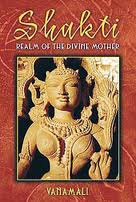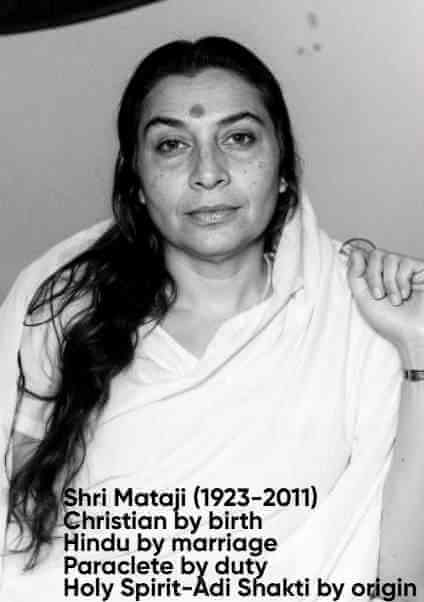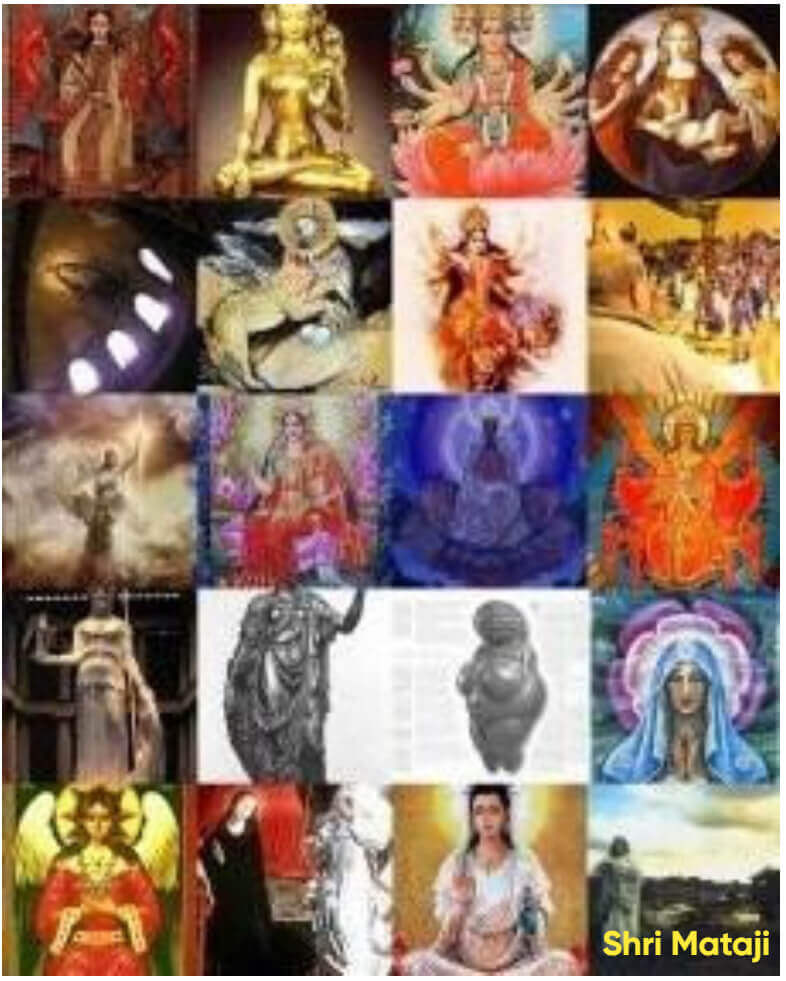There is only Brahman, with Devi (Maha Maya) or Paramesari latent in it
This page explores the esoteric teaching that Brahman—the ocean of pure consciousness—is eternally one and without attributes, yet contains within itself the latent presence of Devi, Maha Maya, or Parameswari. Drawing from the Devi Bhagavatam and Upanishadic insights, it reveals how the feminine principle (Shakti) is the dynamic force that manifests creation, sustains the cosmos, and dissolves it back into the formless. The interplay of Purusha and Prakriti, Shiva and Shakti, is not duality but divine unity expressed through cosmic rhythm. Liberation (moksha) comes only through the grace of Maha Maya, who veils and unveils the truth. This page affirms that the Divine Feminine is not separate from Brahman, but its inherent power—eternally latent, eternally active.

“The Devi Bhagavatam teaches us that the Brahman is the undecaying principle of fullness—the ultimate substratum of everything. It is totally without desire or qualities. Therefore it is not able to create or accomplish any action without the help of its inherent force or Shakti—Maha Maya, the feminine principle, the great goddess—Parameswari. All the gods—Brahma, Vishnu, Shiva, Ganesha, Indra, and so on—can do their respective work only if they are united with Shakti. So Maha Maya can be considered the sole cause of this entire universe of movable and unmovable objects. She is the cause of all causes and manifests as Maha Lakshmi, Maha Saraswati, and Maha Kaali. We should worship her with all adorations. Even the gods worship her in order to do their allotted tasks.”
The Unmanifest Manifested: Brahman and Shakti of the Devi Bhagavatam
Abstract: This paper will explore the philosophical teachings of the Devi Bhagavatam, focusing on the principle that "There is only Brahman, with Devi (Maha Maya) or Parameswari latent in it." It will argue that the text presents a sophisticated form of non-dualism (Advaita) where the phenomenal world, created and sustained by Shakti, is not an illusion but a real manifestation of the unmanifest Brahman. The paper will analyze the relationship between the attributeless Brahman and its inherent creative power, Shakti, demonstrating that all divine functions and cosmic processes are ultimately expressions of this singular, non-dual reality.
1. Introduction
In the vast landscape of Hindu scriptures, the Srimad Devi Bhagavatam presents a unique and powerful perspective on the nature of ultimate reality. It begins with a profound declaration that immediately distinguishes it from many other Puranic texts. The narrator, Suta, at the request of the sages, begins his discourse not by invoking a male deity as the supreme, but by bowing at the feet of the Divine Mother:
I bow at the lotus feet of Devi—Bhagavati, who is worshipped by Brahma, Vishnu, and Shiva and who is the sole source of liberation to all... May that highest primal Shakti, who is known as Vidya in the Vedas, who is omniscient, who controls all, and who is skilled in cutting the knot of the world, give me intelligence to describe her glories. [1]
This opening sets the stage for the central thesis of the Devi Bhagavatam: the Divine Mother, or Shakti, is not merely a consort or a subordinate aspect of the divine, but the ultimate reality itself. The text articulates a sophisticated non-dualistic philosophy where Shakti is the dynamic, creative, and immanent aspect of the transcendent, attributeless Brahman. This makes her the sole cause of the universe and the ultimate object of worship. This paper will explore this unique philosophical framework, demonstrating how the Devi Bhagavatam reconciles the formless absolute with the manifest world through the concept of Shakti.
2. The Philosophical Foundations of the Devi Bhagavatam
The Devi Bhagavatam is the principal scripture of the Shakta tradition, which regards the Goddess as the Supreme Being. However, its philosophy is deeply rooted in the non-dualistic teachings of Advaita Vedanta. The text masterfully integrates the abstract, metaphysical concepts of Vedanta with the devotional and ritualistic practices of Shaktism. This synthesis is often referred to as Shaktadvaitavada, or the non-dualism of Shakti. [2]
The renowned scholar John Woodroffe (Arthur Avalon) highlighted this integration, noting that while there are different schools of Advaita, the Shakta tradition presents a unique interpretation. He argues that the fundamental difference between the Mayavada school of Shankara and the Shakta perspective lies in their approach to the world. The Mayavadin yogi, from the standpoint of absolute reality (Paramarthika Satta), views the world as an illusion (Maya) to be transcended. In contrast, the Shakta sadhaka (practitioner) views the world as a real and divine manifestation of the Goddess. [3]
The Devi Bhagavatam champions this latter view. It does not dismiss the world as unreal but sees it as the very body of the Goddess, a tangible expression of her creative power. This philosophical stance allows for a world-affirming spirituality where devotion, ritual, and engagement with the world are valid paths to liberation, rather than mere preparations for a purely transcendent realization.
3. Brahman and Shakti: A Non-Dual Relationship
The core of the Devi Bhagavatam's philosophy lies in its articulation of the relationship between Brahman and Shakti. The text describes Brahman as "the undecaying principle of fullness—the ultimate substratum of everything." [1] This Brahman is nirguna (without qualities), static, and incapable of action on its own. It is pure, undifferentiated consciousness, an ocean of being.
However, this absolute reality is not devoid of power. Latent within Brahman is its inherent energy, its creative potency, which is Shakti. The text is clear that Shakti is not a separate entity but is one and the same with Brahman, just as heat is inseparable from fire. The Devi Bhagavatam explains this unity through a series of beautiful allegories:
He is the supreme subject and she is the essence of all objects; he is the ocean and she the waves. He is the sun and she the light; he is the sky and she the earth. She is all qualities and he the enjoyer of all qualities; she is all activity and he the sole witness of all activity. She is the form of everything in the cosmos and he the thinker of the forms. She is speech and he the meaning. In other words, she is creation and he the creator. [1]
This interdependence is absolute. Without Shakti, Brahman is inert, a mere potentiality. The text states that even Shiva, without his Shakti, is a mere corpse (shava). [4] Conversely, Shakti has no existence independent of Brahman; she is the power *of* Brahman. This non-dual relationship is the cornerstone of Shaktadvaitavada. There is only one reality, which can be conceived of in two aspects: the static, transcendent consciousness (Brahman/Shiva) and the dynamic, immanent power (Shakti/Devi).
4. Maha Maya: The Creative Power of Brahman
If Brahman is the unmanifest, formless absolute, how does the manifest world of names and forms come into being? The Devi Bhagavatam attributes this process entirely to Shakti in her form as Maha Maya (the Great Illusion). The text describes the impulse to create as a desire that arises within Brahman to become conscious of itself. This initial creative stir is Maha Maya.
Maha Maya then weaves the fabric of the universe through the interplay of the three gunas (qualities): sattva (purity, harmony), rajas (activity, passion), and tamas (inertia, darkness). This cosmic play creates the illusion of a world of separate objects and individual selves (jivatman). The immortal, universal self (atman), which is identical to Brahman, becomes identified with the mortal body and mind, experiencing the dualities of pleasure and pain, joy and sorrow.
However, the term "illusion" in this context does not mean that the world is unreal. It is real, but its reality is dependent on the ultimate reality of Brahman-Shakti. The illusion lies in perceiving the world as separate from its divine source and in identifying the self with the limited, individual ego. This is the great wonder of Maha Maya's work. Yet, she who binds is also she who liberates. The path to liberation (moksha) lies in securing her grace, for only she can remove the veil of illusion she has cast.
5. The Role of the Gods and the Primacy of Shakti
One of the most radical teachings of the Devi Bhagavatam is its assertion of Shakti's absolute supremacy over all other deities, including the Hindu trinity of Brahma (the creator), Vishnu (the preserver), and Shiva (the destroyer). The text unequivocally states:
All the gods—Brahma, Vishnu, Shiva, Ganesha, Indra, and so on—can do their respective work only if they are united with Shakti. So Maha Maya can be considered the sole cause of this entire universe of movable and unmovable objects. She is the cause of all causes... [1]
The gods are not independent entities but are manifestations of her power, brought forth to perform specific cosmic functions. The Devi Bhagavatam describes how, at the beginning of creation, the Goddess manifests as three primary forms: Maha Saraswati, Maha Lakshmi, and Maha Kaali. These three goddesses are the Shaktis of Brahma, Vishnu, and Shiva, respectively, providing them with the energy and capacity to create, preserve, and destroy. [5]
This theological framework establishes the absolute primacy of the Divine Mother. All worship, regardless of the deity to whom it is directed, ultimately reaches her, for she is the source of all divine forms and powers. The gods themselves are depicted as her most ardent devotees, constantly singing her praises and seeking her grace to fulfill their cosmic duties. This reinforces the central message of the text: to worship the Goddess is to worship the ultimate source of all that is.
6. Worship and Liberation
The path to liberation, as outlined in the Devi Bhagavatam, is not one of dry intellectualism or world-renunciation. It is a path of devotion, knowledge, and grace. The text acknowledges the reality of the world and the human condition, and it provides a practical means of spiritual advancement within this context. The key lies in understanding the nature of Maha Maya and her three gunas.
The spiritual aspirant is advised to cultivate sattvic qualities, control rajasic tendencies, and overcome tamasic inertia. However, the ultimate goal is to become a gunatita, one who has transcended all three gunas. This state of liberation, where the individual self realizes its true identity as the universal Brahman, cannot be achieved by self-effort alone. It requires the grace of the Divine Mother.
Such realization, however, can come only with the grace of Maha Maya herself, since she is the one who has caught us in this net of delusion. Therefore those who desire moksa have to pray to her to remove the veil of illusion from their eyes. [1]
Thus, the Devi Bhagavatam champions bhakti (devotion) as a powerful and legitimate path to the highest non-dual realization. By worshipping the Goddess with love and surrender, the devotee can win her grace and attain the ultimate knowledge. This inclusive approach, which validates emotion and devotion alongside philosophical inquiry, makes the teachings of the Devi Bhagavatam accessible and relevant to a wide range of spiritual seekers.
7. Conclusion
The Devi Bhagavatam presents a profound and coherent non-dual philosophy that places the Divine Mother at the center of the cosmos. It masterfully synthesizes the abstract metaphysics of Advaita Vedanta with the heart-centered devotion of the Shakta tradition. The text's central teaching—that there is only one reality, Brahman, whose inherent creative power is Shakti—resolves the apparent conflict between the formless absolute and the world of forms. The world is not an illusion to be negated but a divine play to be understood and revered as the manifestation of the Goddess.
By establishing that all cosmic functions and all divine powers emanate from the one Divine Mother, the Devi Bhagavatam makes a powerful case for her supremacy. It teaches that the path to liberation lies not in denying the world but in seeing the divine within it, and that the ultimate knowledge can be attained through the grace that flows from a heart full of devotion. In a world often dominated by masculine conceptions of the divine, the Devi Bhagavatam's vision of the Goddess as the unmanifest manifested, the cause of all causes, and the ultimate source of both bondage and liberation, remains a timeless and invaluable contribution to human spiritual heritage.
References
[1] Vanamali. "Shakti: Realm of the Divine Mother." Inner Traditions, 2008, pp. 28-31.[2] "Devi Bhagavata Purana." Wikipedia, Wikimedia Foundation, 20 Sept. 2025.
[3] Woodroffe, John. "Śākta and Advaitavāda." Shakti and Shakta, 1929.
[4] Giri, Raghunath. "Shakti (The Power) in the Philosophy of the Puranas." Purana Bulletin, vol. 12, no. 2, 1970.
[5] Sharma Kaintura, Priyanka. "Devi Bhagwat Puran in English – Meaning & Full Summary." Priyanka Sharma Kaintura, 28 May 2025.
Related Articles:
THE GREAT MOTHER
The Divine Feminine in China
The Indian Religion of Goddess Shakti
The Divine Feminine in Biblical Wisdom Literature
The Feminine Spirit: Recapturing the Heart of Scripture
Islam and the Divine Feminine
Tao: The Divine Feminine and the Universal Mother
The Tao as the Divine Mother: Embracing All Things
The Tao of Laozi and the Revelation of the Divine Feminine
Doorway of Mysterious Female ... Within Us All the While
The Eternal Tao and the Doorway of the Mysterious Female
Divine Feminine Remains the Esoteric Heartbeat of Islam
Holy Spirit of Christ Is a Feminine Spirit
Divine Feminine and Spirit: A Profound Analysis of Ruha
The Divine Feminine in Sufism
The Primordial Mother of Humanity: Tao Is Brahman
The Divine Feminine in Sahaja Yoga
Shekinah: She Who Dwells Within
Shekinah Theology and Christian Eschatology
Ricky Hoty, The Divine Mother
Centrality of the Divine Feminine in Sufism
A God Who Needed no Temple
A Comprehensive Comparison of Religions and Gurus


